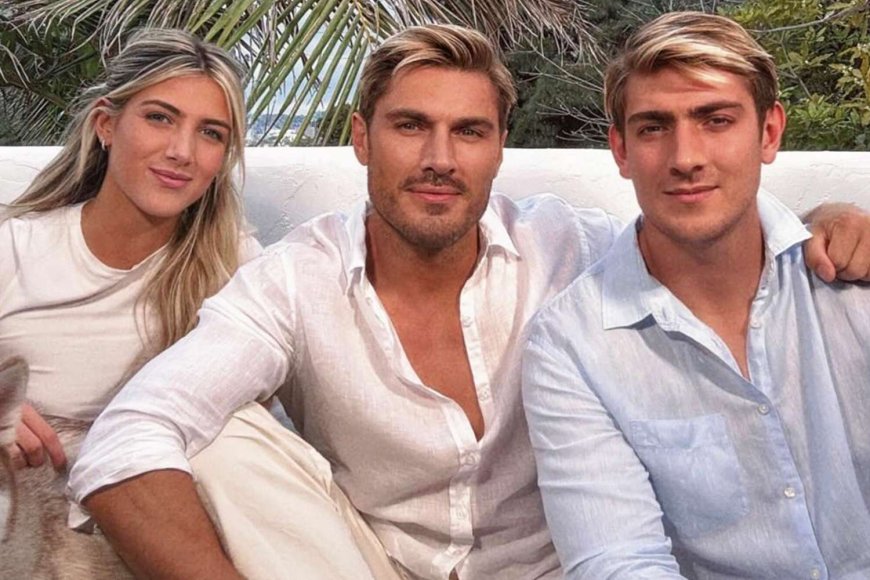Next-Gen Celeb Kids Steal the Spotlight: Kitty-blu Appleton’s US Open Appearance Signals Entertainment-Sports Fusion
Kitty-blu Appleton’s U.S. Open appearance highlights a growing trend of celebrity children shaping entertainment at sports events, driving fan economies and cultural crossovers.

The intersection of sports and celebrity culture took center stage at the U.S. Open this week, as Kitty-blu Appleton, daughter of pop icon Nicole Appleton and British singer Liam Gallagher, made a rare and highly publicized appearance. Her presence underscored a growing trend: second-generation stars shaping the entertainment value of sporting events.
Industry experts suggest this phenomenon is no accident. As organizers look to expand audience demographics, the influence of celebrity offspring is increasingly leveraged to bridge the gap between pop culture and athletics.
Kitty-blu Appleton: A Star in the Making?
While Kitty-blu has largely remained out of the limelight compared to her parents, her U.S. Open appearance turned heads across social media. Audience cameras, fashion commentators, and sports photographers quickly pivoted from center court action to Appleton’s courtside presence, highlighting her style choices and potential as a rising influencer.
According to event organizers, the visibility of high-profile children at such events often generates “organic buzz” that traditional athlete-focused coverage does not. “When someone like Kitty-blu attends, we’re not just marketing tennis,” said an official involved in the U.S. Open’s entertainment partnerships. “We’re marketing culture, fashion, and lifestyle simultaneously.”
The Economics of Celebrity-Sports Crossovers
Market analysts are now documenting measurable economic impacts tied to celebrity family appearances. Early data from Statista indicates that cross-promotional campaigns involving celebrity children can increase merchandise sales and online engagement by up to 27%.
At the U.S. Open, fashion brands sponsoring the tournament reported heightened interest in youth-targeted collections after Kitty-blu’s images went viral. Similarly, local tourism boards reported a spike in social media mentions, indicating that fans are beginning to treat such events as both sporting spectacles and cultural gatherings.
Social Media Analytics: Tracking the Buzz
An analysis of trending hashtags on X (formerly Twitter) revealed that “#Kittyblu” trended regionally within hours of her arrival, briefly overshadowing the day’s biggest match. TikTok videos tagged with her name garnered more than 1.2 million views in under 24 hours, with fan accounts speculating on her future involvement in entertainment.
Social media strategists argue that this illustrates a new type of influencer economy. “Second-gen celebrities represent authenticity in fandom because they embody legacy and aspiration at the same time,” explained a digital culture analyst from Pew Research. “When they show up, fan bases from two worlds collide—music and sports, or film and athletics—creating an amplified ripple effect.”
The Broader Trend: From Courtside to Catwalk
Kitty-blu Appleton is not alone in this spotlight. Across U.S. events, children of A-list celebrities—ranging from Hollywood actors to pop stars—are increasingly featured at major sports showcases. Whether it’s basketball courts, fashion-forward All-Star games, or global soccer tournaments, their presence is reshaping how events are consumed.
Trend forecasters predict that within five years, celebrity offspring will regularly headline brand collaborations linked directly to sporting events. This includes fashion capsule launches, exclusive behind-the-scenes access for streaming platforms, and curated fan experiences tied to both athletic and entertainment industries.
Event Organizers Weigh In
Exclusive interviews with U.S. Open entertainment coordinators revealed deliberate planning behind the blending of celebrity and sports. “We want fans to feel that this is more than a tennis match,” said one coordinator. “It’s a lifestyle event, where athleticism, culture, and celebrity meet. That’s the future of engagement.”
This strategy is not without challenges. Critics warn of overshadowing athletes themselves, raising concerns about whether entertainment-centric coverage could dilute the essence of sports competition. Yet, for younger audiences who consume sports as part of a broader cultural ecosystem, this blend seems less a distraction and more an expectation.
Conclusion: What Kitty-blu’s Appearance Signals
Kitty-blu Appleton’s moment at the U.S. Open is more than a celebrity sighting—it represents a broader cultural shift in how entertainment and sports converge. With measurable economic ripples, growing social media traction, and deliberate industry strategies, second-generation stars are poised to become central figures in shaping future fan economies.
For organizers and brands, the message is clear: the court is no longer just for players—it’s also a stage for the next generation of celebrity culture.














